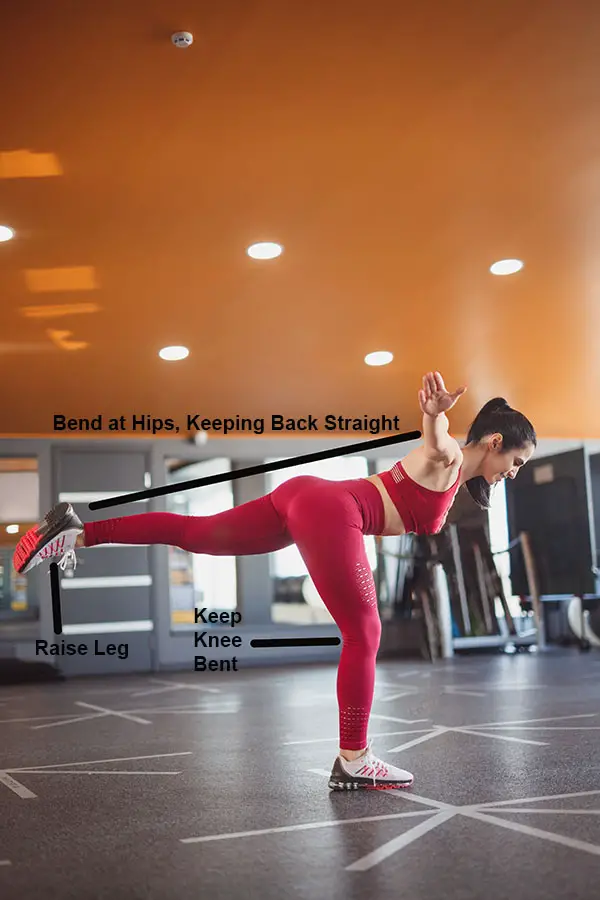Contents
Inverted Hamstring Stretch
Stretching is hard for me to make time for. I don’t know why. Is it just me?
Or do you guys prefer the workouts and neglect stretching too?
I’ll find plenty of time to workout.
Like running for 2 hours, but I don’t prioritize stretching enough.
It is so important to improve performance and prevent injury.
The site spine-health.com states that tight hamstrings are a common contributor to lower back pain.
Stretching is so important, but we often overlook it.
Our hamstrings help us do a multitude of activities like running, walking, and jumping.
They are also very common injuries among athletes and why we need to focus on stretching them.
We need to know how to perform the inverted hamstring stretch and what benefits it offers.
How To Do The Inverted Hamstring Stretch
- Raise your arms for balance. Your arms can either be out to your sides or out in front of you. Have a slight bend in your knees.
- Bend at the hips and lower your chest parallel to the floor, keeping your back straight.
- At the same time, lift your right foot off the floor and raise your right leg behind you, keeping it straight. Don’t lean too far forward.
- Hold the inverted hamstring stretch for 15-30 seconds. Perform the suggested number of repetitions on one side before switching to the opposite leg.
Benefits of the Inverted Hamstring Stretch
The inverted hamstring stretch will work on the flexibility and mobility of your hamstrings.
It will also improve your overall stability and balance.
It also works on strengthening your core.
This should help to improve or prevent lower back pain.
Target Muscles Used
The inverted hamstring stretch is a dynamic stretch that uses your hamstrings, glutes, calves, and core while working on your balance.
You will also improve your balance by engaging your core and stabilizing all the muscles required to keep yourself balanced on one leg.

Variations
If you are having trouble balancing, don’t worry there are different variations.
The standing hamstring stretch may not be possible or may even aggravate previous injuries.
You could do this next to a chair or something similar to help maintain balance if you feel that you need some help.
If you really struggle with flexibility, you can do assisted hamstring stretches with a band or towel before progressing.
You can try a standing hamstring stretch where you place one foot on a chair and then reach for the toes on that foot.
Also, try using a foam roller to roll out any tightness you may be experiencing.
Next, you can sit with one leg out straight and reach for those toes in a sitting hamstring stretch.
To improve mobility, perform forward and backward leg swings to help increase flexibility.
Progressions
Try performing 3 sets of 10 repetitions holding it for 15 to 30 seconds each repetition.
Complete 10 repetitions on each leg before moving to the next leg.
This will help to improve your balance and flexibility.
Conclusion
Stretching takes time and effort.
Many people don’t take the time to stretch after exercising and end up paying for it in the long run.
Lower back pain is often a result of tight hamstrings.
The inverted hamstring stretch will keep your hammys stretched while also helping to reduce the risk of injury.
Hamstring injury is one of the most common injuries in athletes.
4 steps to perform the inverted hamstring stretch
- Raise your arms for balance. Your arms can either be out to your sides or out in front of you. Have a slight bend in your knees.
- Bend at the hips and lower your chest parallel to the floor, keeping your back straight.
- At the same time, lift your right foot off the floor and raise your right leg behind you, keeping it straight. Don’t lean too far forward.
- Hold the inverted hamstring stretch for 15-30 seconds. Perform the suggested number of repetitions on one side before switching to the opposite leg.

